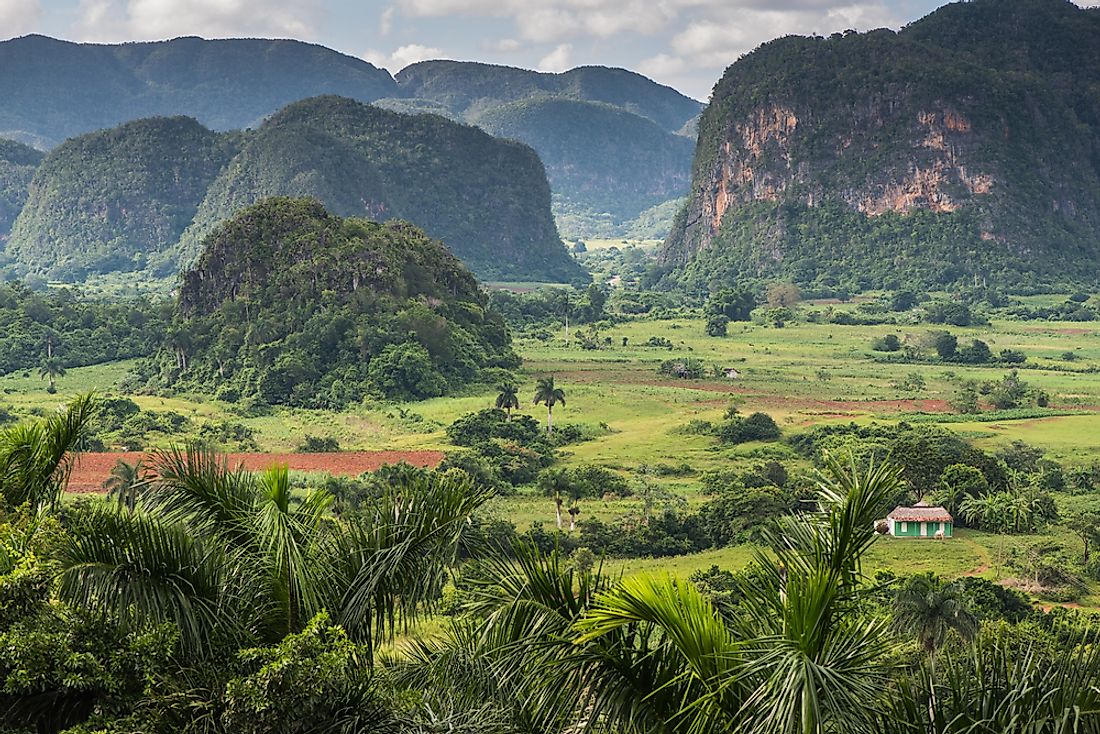The Seven Remarkable National Parks Of Cuba

Cuba is a Caribbean nation with a great diversity of flora and fauna including several endemic species. The national parks of the country are as follows:
7. Alejandro de Humboldt National Park
Alejandro de Humboldt National Park is a UNESCO World Heritage Site of Cuba. It is located in eastern Cuba’s North Coast. The park protects the forests on the Nipe-Sagua-Baracoa Mountains. The park also includes a protected marine area within its limits. Several major Cuban rivers originate in the mountains of the park. The habitat of the national park varies with altitude from the coast to the mountain tops. The area hosts extraordinary biodiversity including several endemic species of flora. Over 145 species of ferns and 1,300 species of seed plants including 900 endemics are found here. High rates of endemism are also prevalent among the fauna of the park. The West Indian Manatee is an iconic species found in the coastal waters of the park.
6. Ciénaga de Zapata National Park
Ciénaga de Zapata National Park is a natural treasure of Cuba. It has been designated as a World Heritage Site and a Biosphere Reserve by the UNESCO. It is also a Ramsar site. The park, located in the southern coast of Cuba in the Zapata Peninsula and enclosing the Zapata Swamp, hosts a variety of terrestrial and marine habitats like semideciduous forests, grasslands, mangroves, coral reefs, seagrass beds, underwater canyons, lagoons, etc. Several endemic species of flora have been recorded at this national park. Some of the most notable fauna of the park are the Cuban and American crocodile, Cuban sandhill crane, Zapata rail, Zapata sparrow, Cuban tody, Cuban parakeet, Cuban boa, etc. More than 175 species of birds live here including 18 endemic species. 31 species of reptiles and more than 1,000 invertebrate species are also present in the Ciénaga de Zapata National Park. Several species of fish are also found in the waters of the park.
5. Turquino National Park
Turquino National Park is located in the southeastern Cuban province of Santiago de Cuba. The park, established in 1980, encompasses an area of 229.38 square km. The park hosts Cuba’s highest point, the 6,480 ft high Pico Turquino. Cuban pine forests and Cuban moist forests dominate the vegetation of the national park at higher and lower altitudes, respectively. A part of the country’s southeastern coast is also included within the limits of this park.
4. Caguanes National Park
Caguanes National Park is located in the country’s northern coast in the Yaguajay municipality. The park covers an area of 204.87 square km. The park’s features swamps and mangroves, cays, coastal caves, niches, and arches. The ecosystem of the Caguanes National Park hosts a variety of flora and fauna including several endemics. Over 112 species of birds nest in the wetland habitats of the park. The caves of the park are home to large populations of birds. Migratory birds like flamingos, pelicans, and spoonbills regularly visit the park.
3. Jardines de la Reina National Park
Jardines de la Reina National Park encompasses the archipelago of the same name in the southern part of Cuba in the Caribbean Sea. The park was established in 2002 and has an area of 2,170 square km. Over 600 islands and cays are part of this archipelago. Scuba diving and fishing are popular tourist activities at this park. Several species of fish like the whale shark, yellowfin grouper, Atlantic goliath grouper, Cubera snapper, etc., are found here. The presence of the Caribbean and silky reef sharks in the coastal waters of this park makes scuba diving an exciting experience for the divers. There is also an opportunity of observing crocodiles in the mangroves labyrinth of the park.
2. Sierra Cristal National Park
Sierra Cristal National Park is located in the Holguín Province of the country. Established in 1930, it is Cuba’s oldest national park. It has an area of 185.37 square km. The park has a mountainous landscape since it is located in one of the country’s highest mountain ranges, the Sierra Cristal. The highest point in this park is the Cristal Peak at 4,300 ft. Pine forests dominate the vegetation cover of the national park. The Cuban solenodon, a small mammal with a venomous saliva, is found in this national park. It is labeled as endangered by the IUCN. The ecology of the region is monitored by a research station set up in the park.
1. Viñales Valley National Park
Viñales Valley National Park protects the karst landscape of the Viñales Valley. The valley was also inscribed as a UNESCO World Heritage Site in 1999. The valley is surrounded by mountains and also features dramatic dome-like limestone outcrops rising from the relatively flat plain. These outcrops are called mogotes and can be up to 300 m tall. Hiking and rock climbing are popular tourist activities in the region. Several species of endemic flora and fauna are also found here. The Cuban trogon, Cuban tody, Cuban grassquit, etc., are some of the endemic fauna of the park. The valley’s human population practices traditional agricultural methods to raise crops like tobacco in the valley.











